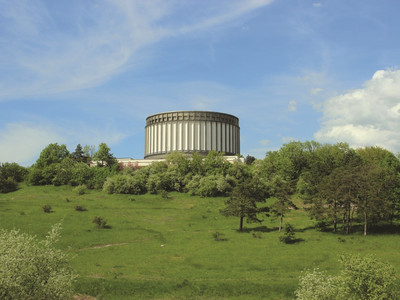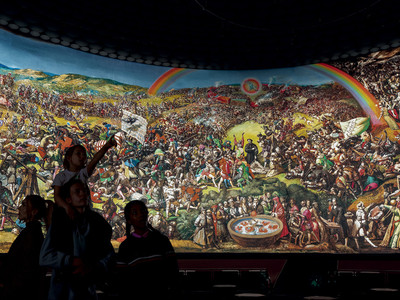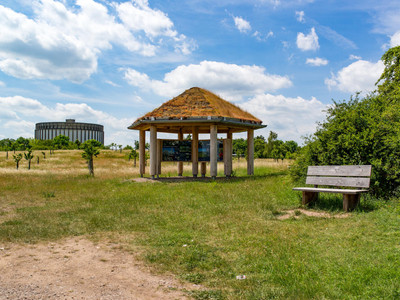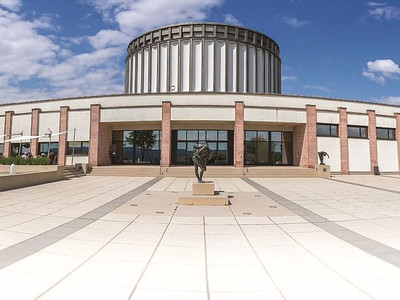The town of Bad Frankenhausen, which was the site of a bloody religious war almost 500 years ago, lies in the middle of the Diamantenen Aue (Diamond Meadow) in northern Thuringia.
A functional cylindrical building, which was built in the mid-1970s especially for a traditional battle panorama, which was primarily and exclusively dedicated to this event in the 16th century, is perched above the city and visible from afar.
Since 1989, the Panorama Museum has been presenting one of the largest and busiest paintings in modern art history - the monumental painting "Frühbürgerliche Revolution in Deutschland" (Early Civil Revolution in Germany) by Werner Tübke.
The magic that enchants the viewer is created from the interplay of extraordinary dimensions, brilliant colours, old-masterly virtuosity, historical authenticity, impressive lighting and an unusual architectural shell. The result is "Die Sixtina des Nordens" (The Sistine of the North) - an impressive picture dome that casts an irresistible spell on every viewer and which has already been admired by over 3 million visitors. The dimensions of 14 metres in height and 123 metres in circumference alone are sensational and make it an incomparable experience.
However, mastery of the craft and intellectual complexity have already secured a firm place in art history for the ingenious work of the painter Werner Tübke (1929-2004), co-founder of the "Leipzig School". The award of the European Heritage Label is an impressive illustration of this.
Tübke invested 12 years of his life in the panoramic painting. When the museum finally opened its doors on 14th September 1989, the state commissioners were presented with an overwhelming monumental painting that exceeded their specifications in every respect. The result was an epochal painting of the upheaval from the late Middle Ages to modern times, but also a universal, timeless world theatre in which basic themes of humanity, such as love and hate, death and birth, harmony and discord, symbolise the infinite return of the same. Werner Tübke's "Zauberberg der Geschichte" (Magic Mountain of History) embodies the peak of his life's work as well as a highlight of Western art in general. As a picture dome of superlatives, it appears almost as a "Sistine of the North", comparable in power and significance only to the great artistic achievements of the past.
Visitors enter a world that completely encloses them in painting. A sublime symphony of colours fills the room and takes the visitor on a journey into the past. A place that invites visitors to marvel and discover, to linger and reflect, to pause and dream. A sensual pleasure - not just for the eyes, but also for the mind.



